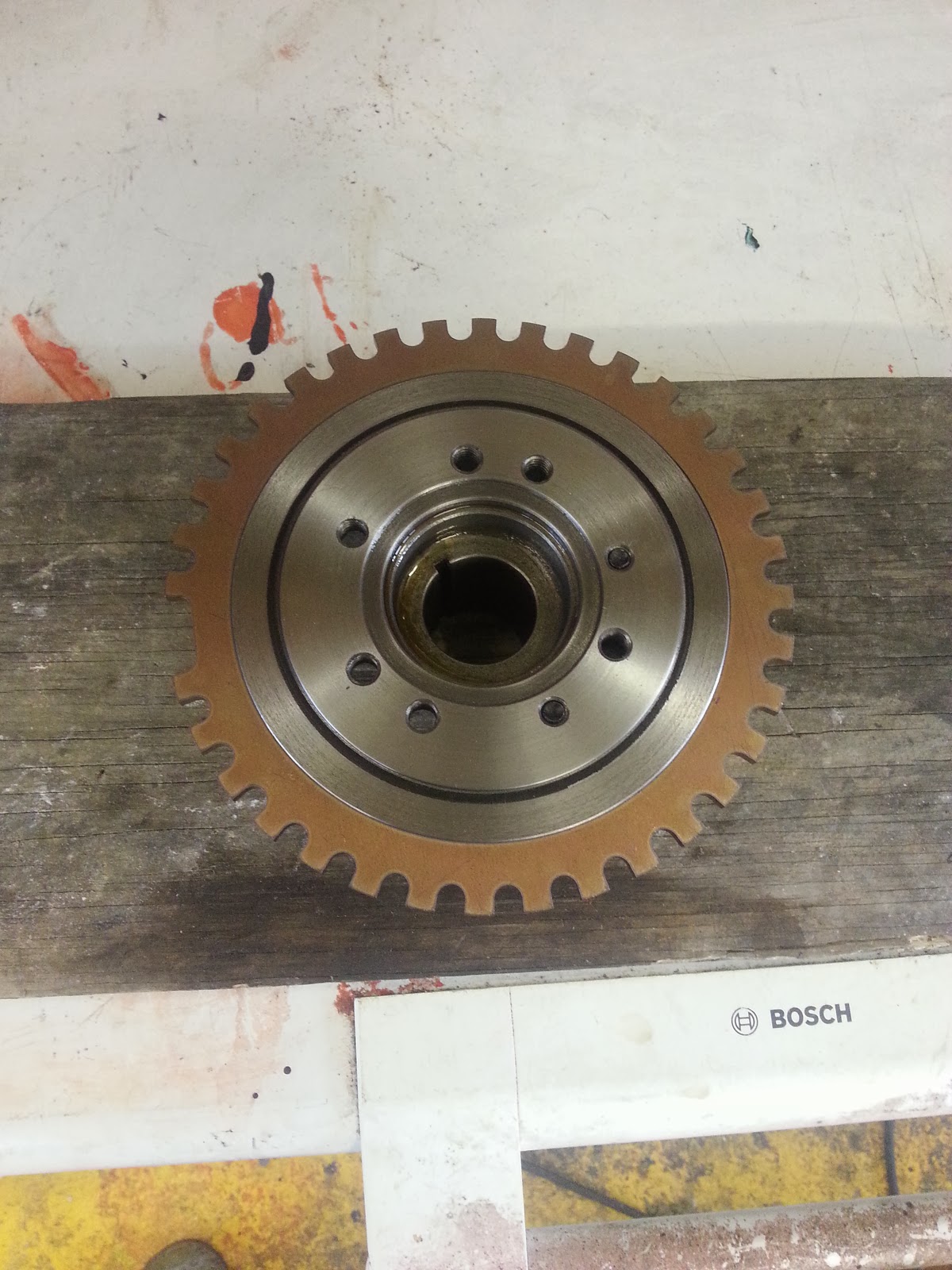At the weekend, I continued with the saw. I used a die wrench to cut the M20 thread in the driveshaft. Again, a learning experience. I'd really forgotten how to cut threads (if I even ever knew). The trick is to turn the wrench until it's tight, and then wind it back, clean out the swarf and repeat. Do not try to cut lots of thread in one go. I ended up doing about a 1/8th turn each time. It took a while. I did have a look at the lathe to see about cutting the thread in that. I can't see how to select a metric thread, which is a pain. It could be that it doesn't have the metric gearbox. I'll have to investigate further. Given the bar is 20mm, cutting a metric M20 thread makes the most sense.
Once the thread was cut, it was time to see if the nut fits OK.
It's taking shape now - the brass piece is the clamp for the outside of the blade. The big nut will push against it. Like this:
Here's the other side:
Since I do admit my mistakes, that bit where the shaft is turned down slightly is where I clamped it in the vice for when I was using the die. I managed to get the vice to chew the shaft up a bit. I chucked it back up in the lathe to tidy it up.
As before, I now need to fit a pulley so that I can drive the shaft. My last attempt ended in disaster and a smashed pulley. This time I managed it. So again, first bore out the pulley:
Then, brass insert in the freezer, pulley on the Aga, and with the help of a big vice:
It's in!
I then bored that insert to 20mm to fit the shaft. I broke a drill doing it too. Didn't spin the insert fast enough I think. In the end though, it's on the shaft:
So now, apart from actually attaching the pulley and the blade to the shaft, that's that bit done!
Lots still to do. Plan is to build a sort of frame for the driveshaft and motor and so on. I'm not sure what to call this, I guess the 'saw unit'. Then attach that to the bottom of the table.
Now I can see what's what, I think the depth of cut should be just under 150mm.
Once the thread was cut, it was time to see if the nut fits OK.
It's taking shape now - the brass piece is the clamp for the outside of the blade. The big nut will push against it. Like this:
Since I do admit my mistakes, that bit where the shaft is turned down slightly is where I clamped it in the vice for when I was using the die. I managed to get the vice to chew the shaft up a bit. I chucked it back up in the lathe to tidy it up.
As before, I now need to fit a pulley so that I can drive the shaft. My last attempt ended in disaster and a smashed pulley. This time I managed it. So again, first bore out the pulley:
It's in!
I then bored that insert to 20mm to fit the shaft. I broke a drill doing it too. Didn't spin the insert fast enough I think. In the end though, it's on the shaft:
So now, apart from actually attaching the pulley and the blade to the shaft, that's that bit done!
Lots still to do. Plan is to build a sort of frame for the driveshaft and motor and so on. I'm not sure what to call this, I guess the 'saw unit'. Then attach that to the bottom of the table.
Now I can see what's what, I think the depth of cut should be just under 150mm.










































